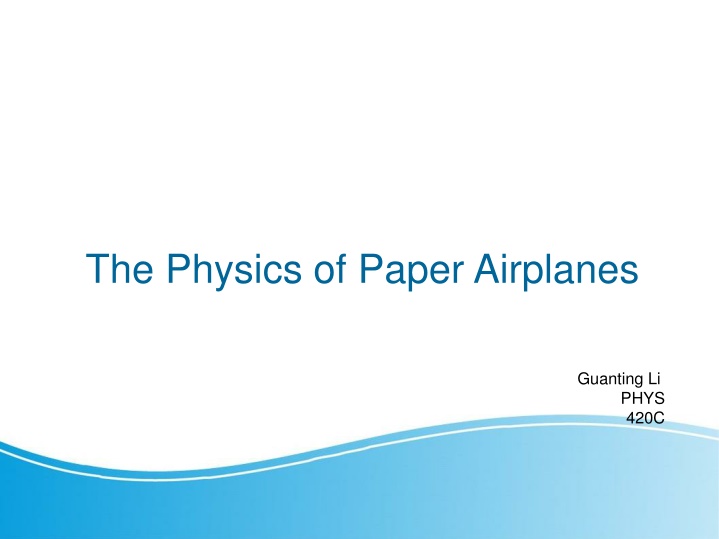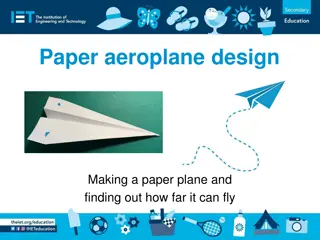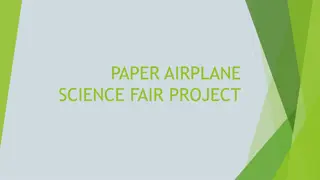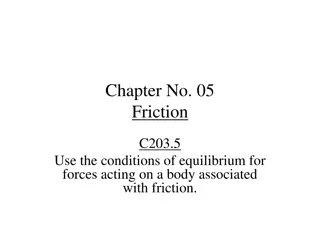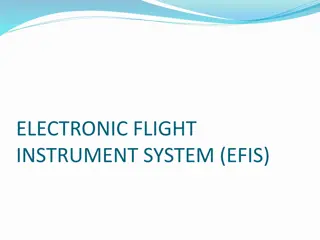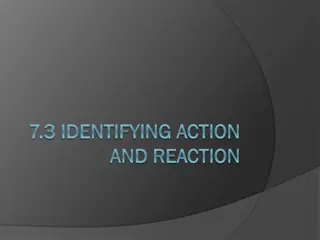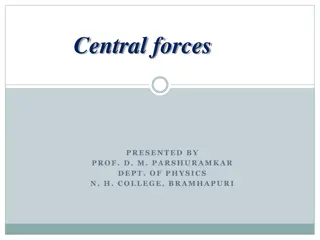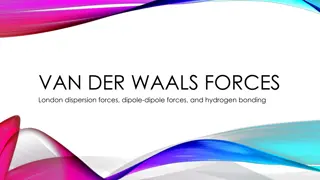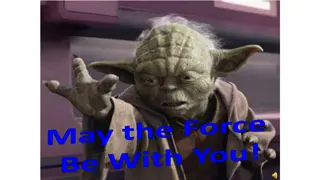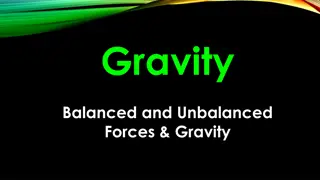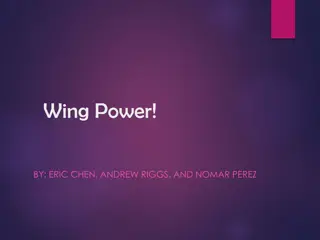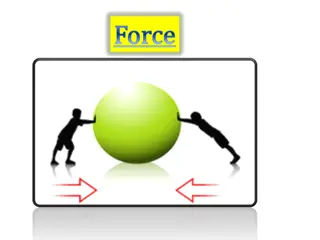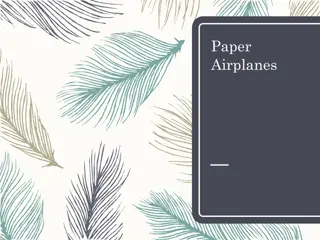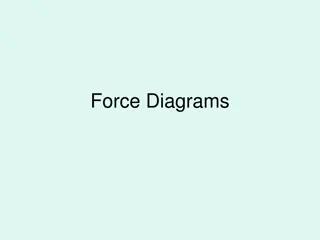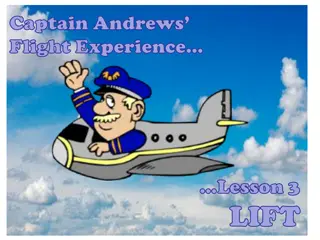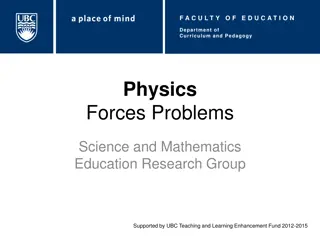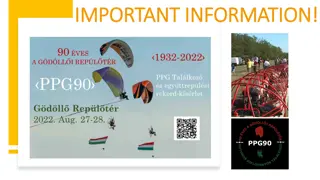Unveiling the Physics of Paper Airplanes: A Journey Through Forces and Flight
Explore the fascinating world of paper airplanes through the lens of physics, uncovering the secrets behind their flight behavior. Discover the forces, free-body diagrams, and torque at play, while enjoying a hands-on experience of launching paper planes and indulging in sweet rewards. Delve into the history of airplanes, from the Wright Brothers' pioneering flight to modern advancements fueled by engine technology and aerodynamics. Gain insights into forces, Newton's Third Law, and the principles shaping the dynamics of paper aircraft.
Download Presentation

Please find below an Image/Link to download the presentation.
The content on the website is provided AS IS for your information and personal use only. It may not be sold, licensed, or shared on other websites without obtaining consent from the author.If you encounter any issues during the download, it is possible that the publisher has removed the file from their server.
You are allowed to download the files provided on this website for personal or commercial use, subject to the condition that they are used lawfully. All files are the property of their respective owners.
The content on the website is provided AS IS for your information and personal use only. It may not be sold, licensed, or shared on other websites without obtaining consent from the author.
E N D
Presentation Transcript
The Physics of Paper Airplanes Guanting Li PHYS 420C
Goals for today! Get to know the behind-the-scenes physics action on why our paper airplanes behave the way they do Forces, free-body diagrams, and torque! Fly some paper airplanes through a launcher Get candy while learning physics Starbursts/skittles regardless of answer correctness! Pretty sweet deal
A Brief History of Airplanes First heavier-than-air flight accomplished in 1903 by the Wright Brothers The principle behind heavier-than-air flight involves passing air quickly enough over wings to generate lift and overcome gravity. Image Credit:: https://en.wikipedia.org/wiki/Lift_(force)#/media/File:K arman_trefftz.gif Image credit: https://airandspace.si.edu/stories/editorial/first-flight
Airplane history contd Airplane designs really improved over the years, but the main theme behind these improvements are usually better engines for thrust and reduced drag for less energy waste / better performance.
Image Credit: http://www.aviation-history.com/theory/force.htm
Motivation Know a bit more on the theory behind paper airplanes! Find the intuition behind some Free Body Diagrams (FBDs) Apply intuitions from Free Body Diagrams and torque to the performance of airplanes
What are some examples of a force? Try to name two or three forces on your worksheet
Some examples of forces Gravitational force Electromagnetic force Frictional force Buoyant force
Newtons Third Law Cornerstone of our lesson! Newton s Third Law says, all actions have an equal and opposite reaction to it More physicsy term: every force has an equal and opposite reaction force Example: we don t fall towards the center of the earth! Why is that? (Hint: the theory is in this slide)
Normal force! A force that supports us directly We give the ground a downwards force, and Newton s Third Law gives us an equal and opposite force (upwards)
What are some examples we can find for Newton s Third Law? Feel free to write an example along with your own definition of Newton s Third Law
Newtons Third Law contd For example, when you push a door, a door pushes back on you. Hitting a stationary puck: the puck moves forward due to acceleration, and the stick receives a push in the opposite direction of the puck s movement.
Questions so far? Image credit: https://www.quickanddirtytips.com/productivity/time-management/how-to-use-driving-questions-to-shape-your-life https://www.oldtimecandy.com/products/starburst-tropical-roll
Feel the Force! Put your hands the other way, and try pushing downwards Should feel the table the table can only be felt if it s pushing back at you!
How can we represent this in Physics?
Free Body Diagrams! A useful way for us to abstract our information down to just what we need Approximate an object with point mass No need for shape, color or size of object!
Okay, what does all of this have to do with paper airplanes?
A plane on the ground FBD Note that the two lines are roughly the same in length; this expresses that the magnitudes on the two forces are similar FN FG
Whats inconsistent with this diagram? There is no normal force! The object in the FBD would keep on accelerating towards the earth FG
And this one? Normal force is here now, but in the wrong direction! Newton s Third Law tells us that the two forces have to be equal in magnitude, and opposite in direction. FG F N
A plane flying midair, with NO acceleration in any direction! In-class activity
Plane FBD FLift FThrus FDrag t FG
Paper airplane travelling in air (Addendum: the paper airplane isn t travelling fast enough, so it is falling downwards) In-class activity
Paper airplane travelling in air Note the absence of force from thrust In here, the plane is falling because it doesn t have enough speed to generate lift. FLift FDrag FG What happens if we throw this plane again, but faster?
Crumpled paper ball? In-class activity
Crumpled paper ball? Paper ball has little to no lift, so there is no FLift for the ball; lots of drag however FDrag FG
What is FBDs useful for? Free Body Diagrams are good for intuition, but they also have their limitations Mostly useful on showing net forces, and representing objects that don t rotate too much Torque can fill in more details on a plane s trajectory
What is torque? A force that is not applied directly on the center of mass, will result in torque Torque makes an object turn faster in one direction (clockwise/counterclockwise)! http://www.dynamicscience.com.au/tester/solutions1/hydrau licus/torquework.html
Apparatus! Source: youtube.com/beginnerlife
Inspiration FYI: https://www.youtube.com/watch?v=kYITs3JG1eE
References https://www.khanacademy.org/science/ap-physics-1/ap-forces-newtons- laws/introduction-to-forces-and-free-body-diagrams-ap/v/types-of-forces- and-free-body-diagrams https://www.physicsclassroom.com/class/newtlaws/Lesson-2/The-Meaning- of-Force http://www.aviation-history.com/theory/force.htm https://wiki.mattrude.com/images/4/44/Bernoulli_Newton_Lift.pdf https://www.youtube.com/watch?v=kYITs3JG1eE https://www.teachengineering.org/lessons/view/cub_airplanes_lesson06
Further Reading Below are some links that might interest those who enjoy flying paper airplanes: Walkalong gliders! Quite fascinating to see https://sites.google.com/site/controllableslopesoaring/ https://www.instructables.com/id/Paper_Airplane_Walkalong_Glider/ https://sciencetoymaker.org/airsurf/make-your-own-gliders/ More airplane designs: https://www.foldnfly.com/index.html#/1-1-1-1-1-1-1-1-2 And some more: http://web.mit.edu/swe/www/PaperAirplanes.pdf Learn from NASA: https://www.grc.nasa.gov/www/k-12/airplane/guided.htm Veritaseum talks about lift (Bernouilli vs Newton): https://www.youtube.com/watch?v=aFO4PBolwFg
Bonus Slide Image credit: https://www.reddit.com/r/dankmemes/comments/8x2ire/must_have_200_iq_to_understand_this_mem e/
